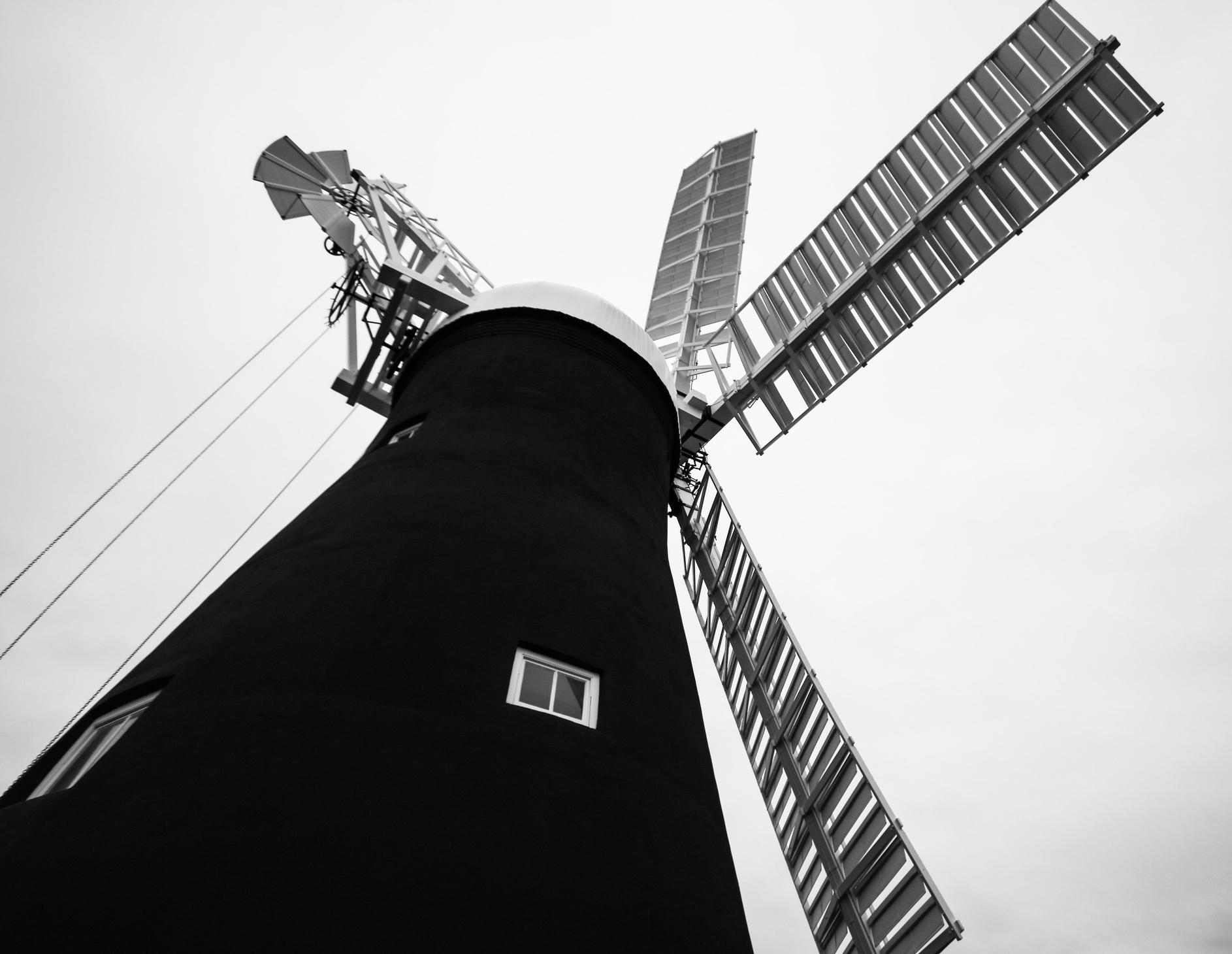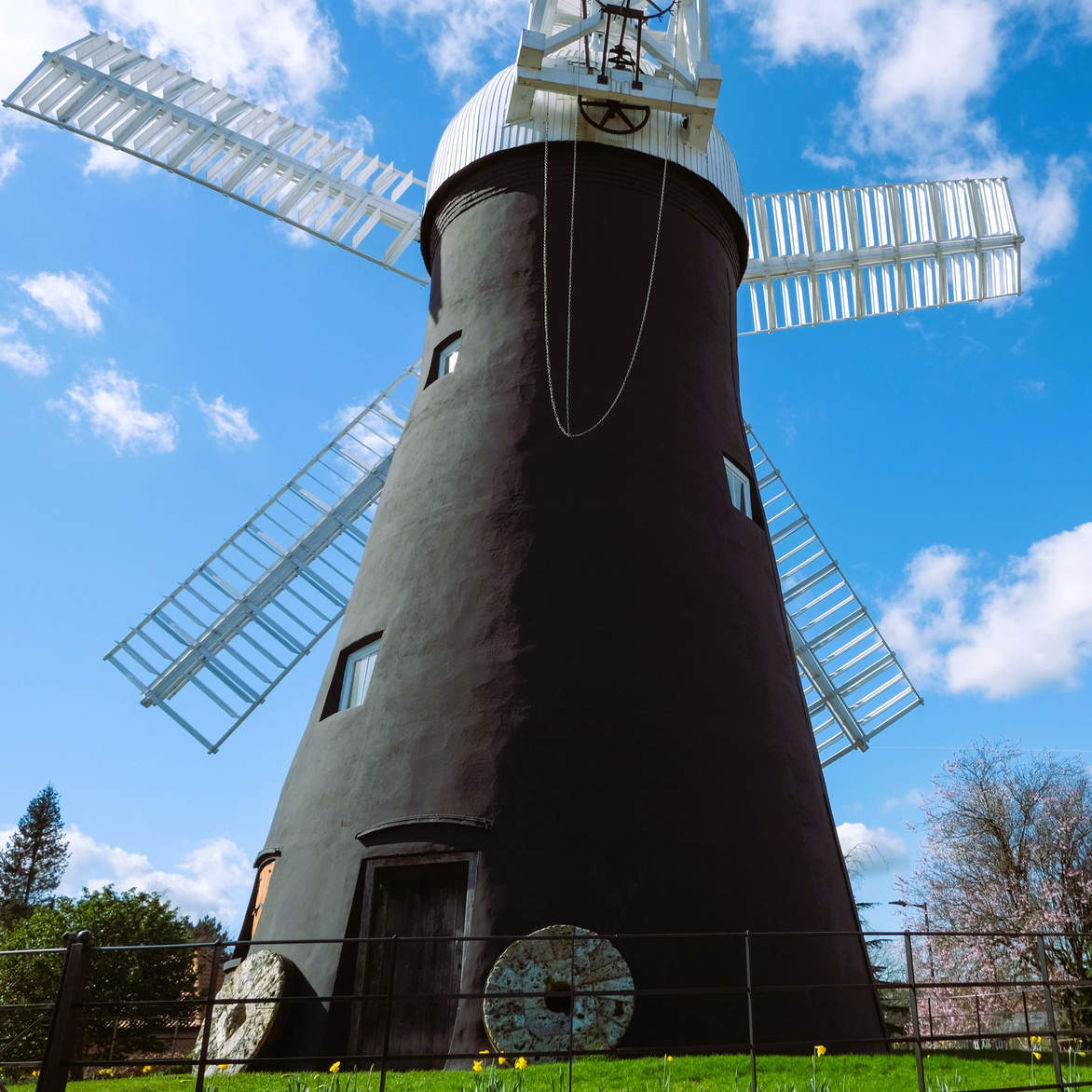
Milling on Wind
A quick tour during
a session milling Rye grain
Brakewheel and wallower
Drive shaft
Spur wheel
Tentering

Sails turning
Grain into stones
Flour into sack
Sails turning
The brake has been released and the shutters closed. Now, with enough wind, the sails will turn.
If the wind gusts, the shutters open automatically to regulate the sails’ speed, and close again when the gust has passed.
To stop the mill, the shutters are opened fully, and when the sails come to rest, the brake is put on again.
The mill’s sails always point straight into the wind: the whole cap is constantly moving its position, driven by the fantail at the back of the cap.
Brakewheel and wallower - in the Cap of the mill
The great vertical brakewheel (the brake is an elm band brake encircling it) is attached to the windshaft which bears the sails.
As it turns it engages with the horizontal wallower, on top the drive shaft which takes the power down through the mill and ultimately to the stones.
Drive shaft - on the Dust floor
The drive shaft was very likely once the mast of a broken-up sailing ship. It is one of the few parts of the machinery which has survived since the mill was built.
Originally the mill was one storey lower. When its height was raised, the wooden shaft was raised too, and a cast iron extension added at its base to take the power down through the Bin floor (not shown in this tour) to the Stones floor.
Spur wheel - on the Stones floor
The spur wheel, at the top of the picture, is turned by the drive shaft. The smaller cogwheel it is driving is the stone nut, at the top of a shaft or ‘quant’; this turns the top ‘runner’ stone of the pair of millstones inside the round wooden tun. The lower ‘bed’ stone is fixed.
The tun collects the flour as it comes out of the stones, and a chute inside the tun takes the flour down to the Meal floor for bagging.
Grain into stones - on the Stones floor
The grain passes from a hopper into the ‘shoe’, and the outflow is controlled by a black sliding gate. The quant is square, so as it turns it rattles the shoe and shakes the grain into the ‘eye’ of the stones.
As the grain travels to the outer edge of the stones it is gradually ground finer and finer, ending as flour.
Rye grain is very free-flowing and the gate is kept low.
Tentering - on the Meal floor
The ‘tentering gear’ regulates the gap between the stones, keeping the flour to the correct fineness. The ‘governor’, with its two black weights, speeds up with the speed of the wind; a level then brings down the top stone which may otherwise rise and coarsen the flour. There are also manual controls.
The large spinning wheel under the stones is one of the mill’s mysteries. It can never have connected to anything in its present position.
Flour into sack - on the Meal floor
The Rye flour falls into a sack, which when it’s full will be switched for an empty one, and the flour will be weighed and bagged as milling continues.
The miller can sample the flour as it falls, by opening a small hatch into the chute. Then if necessary the tentering can be adjusted.
Two of the mill’s four sets of stones are wind-driven, one has an electric motor to allow milling when there is no wind, and one set is redundant: the stones are past use.